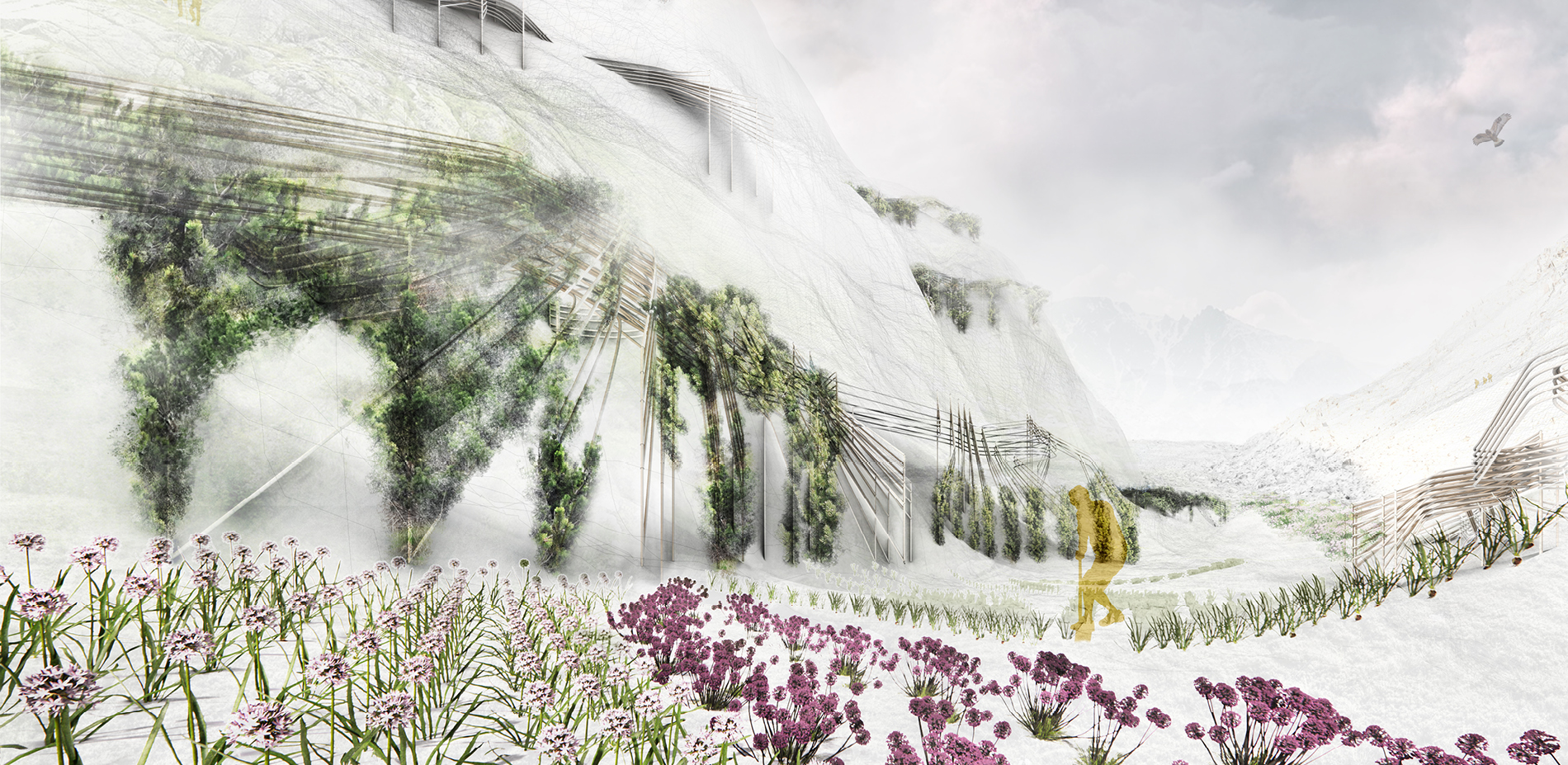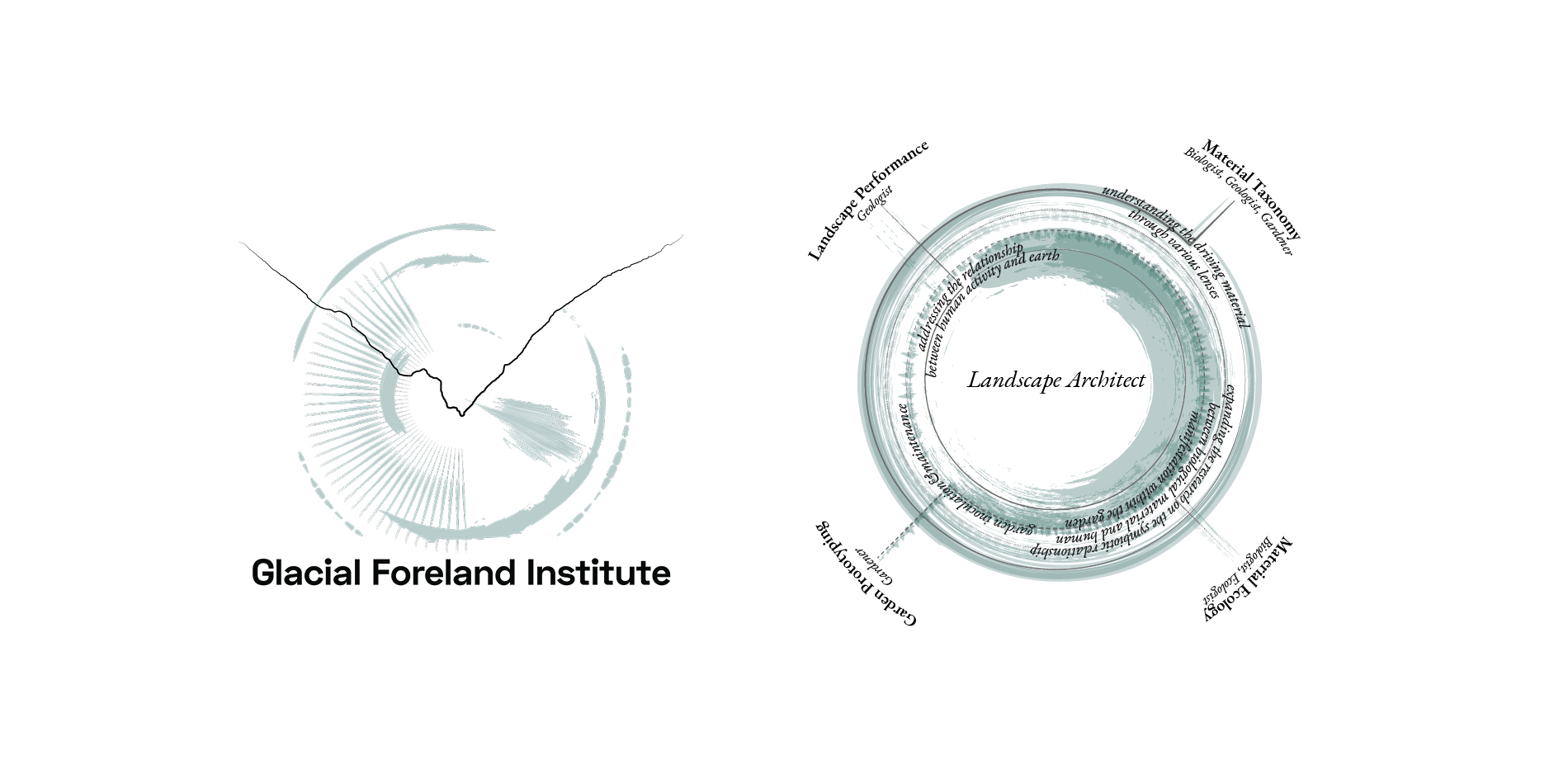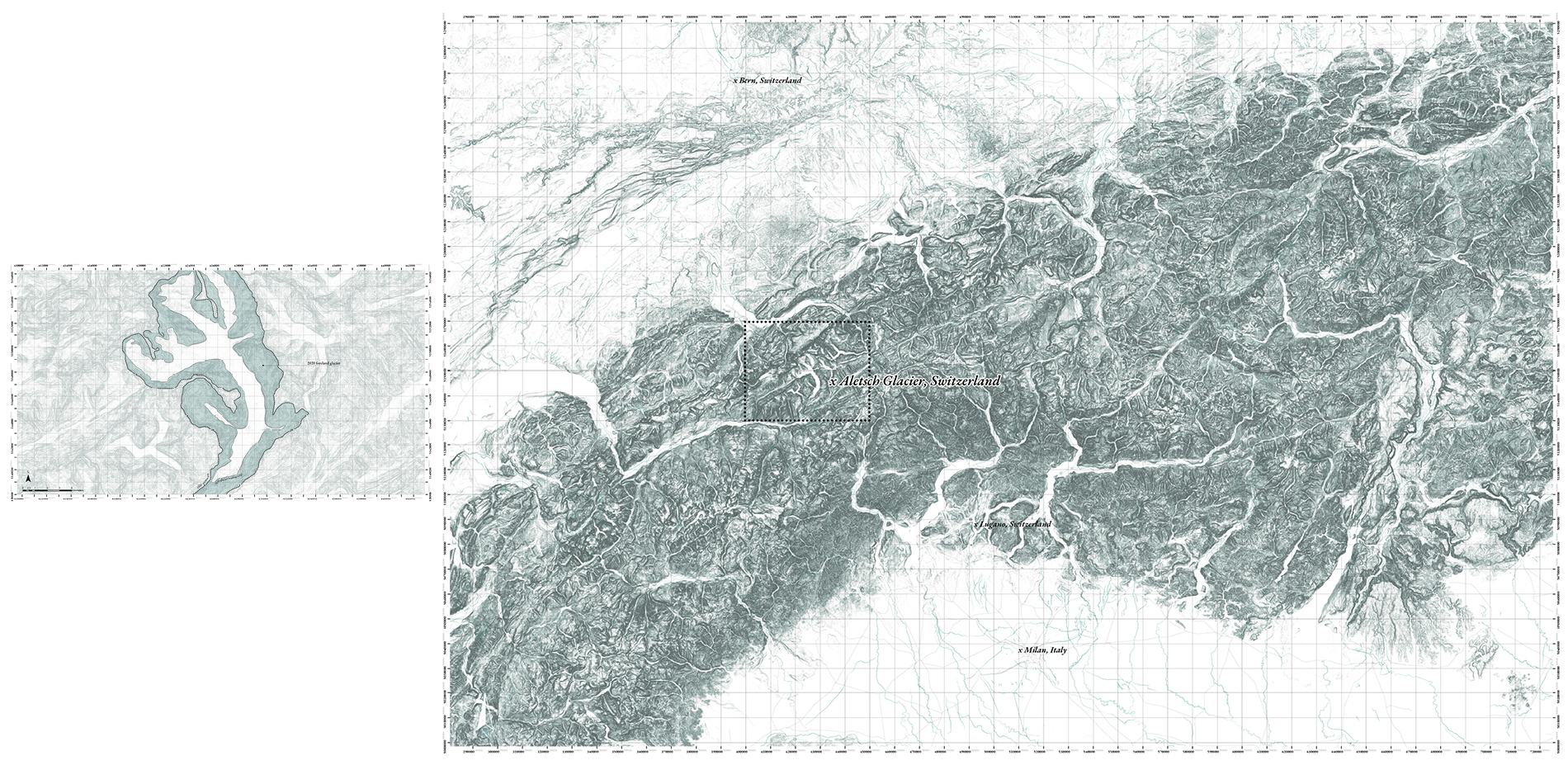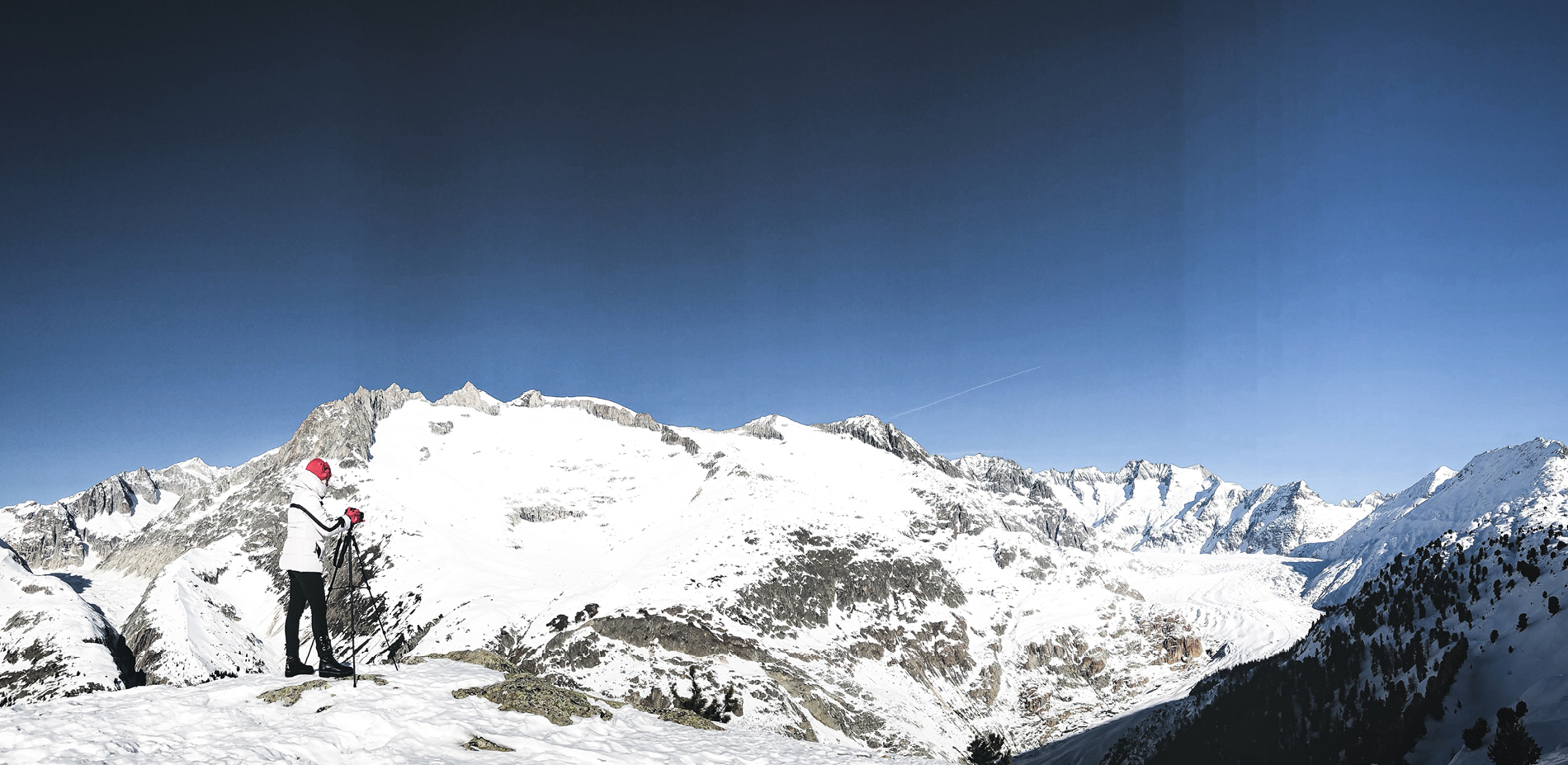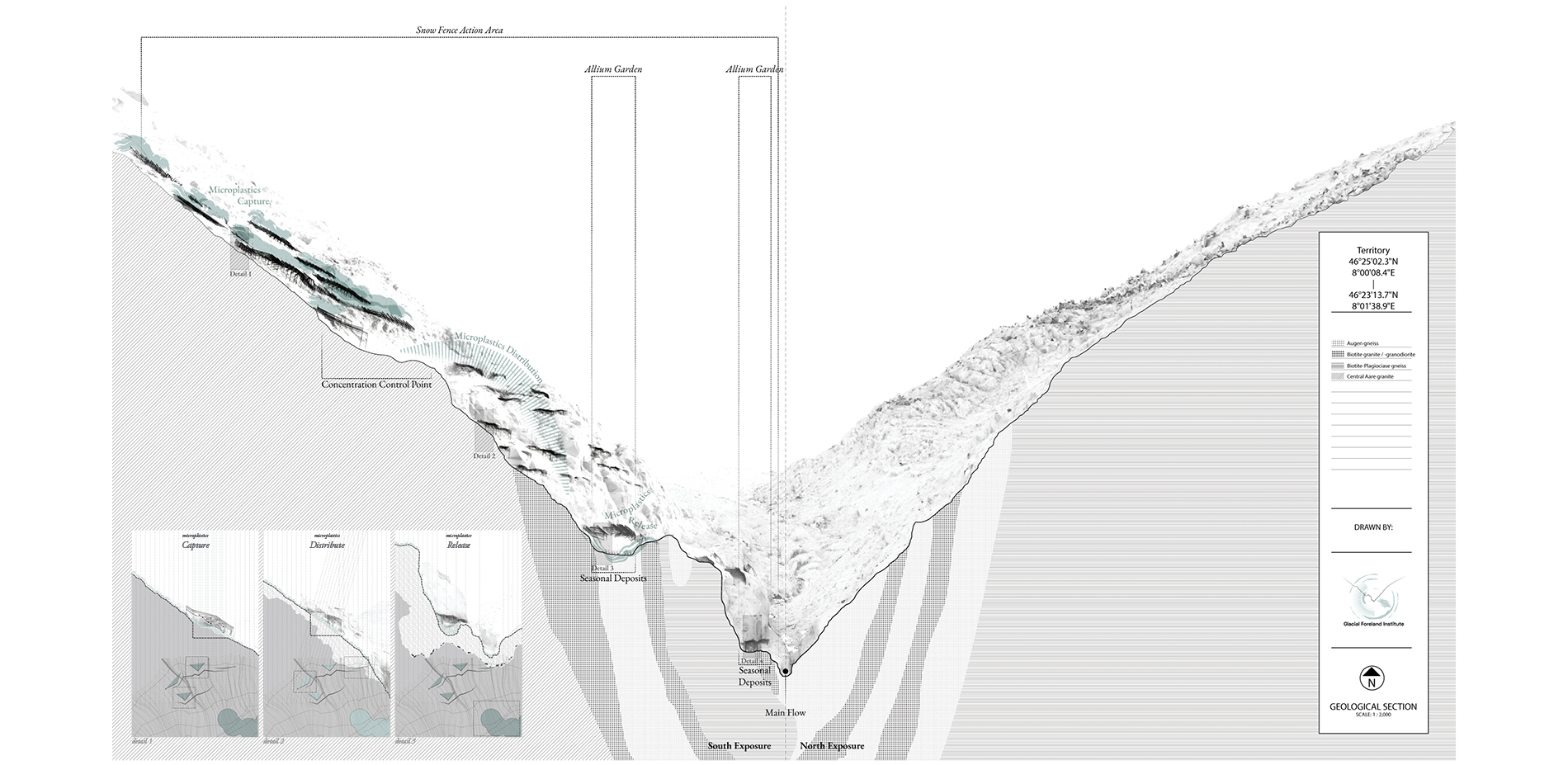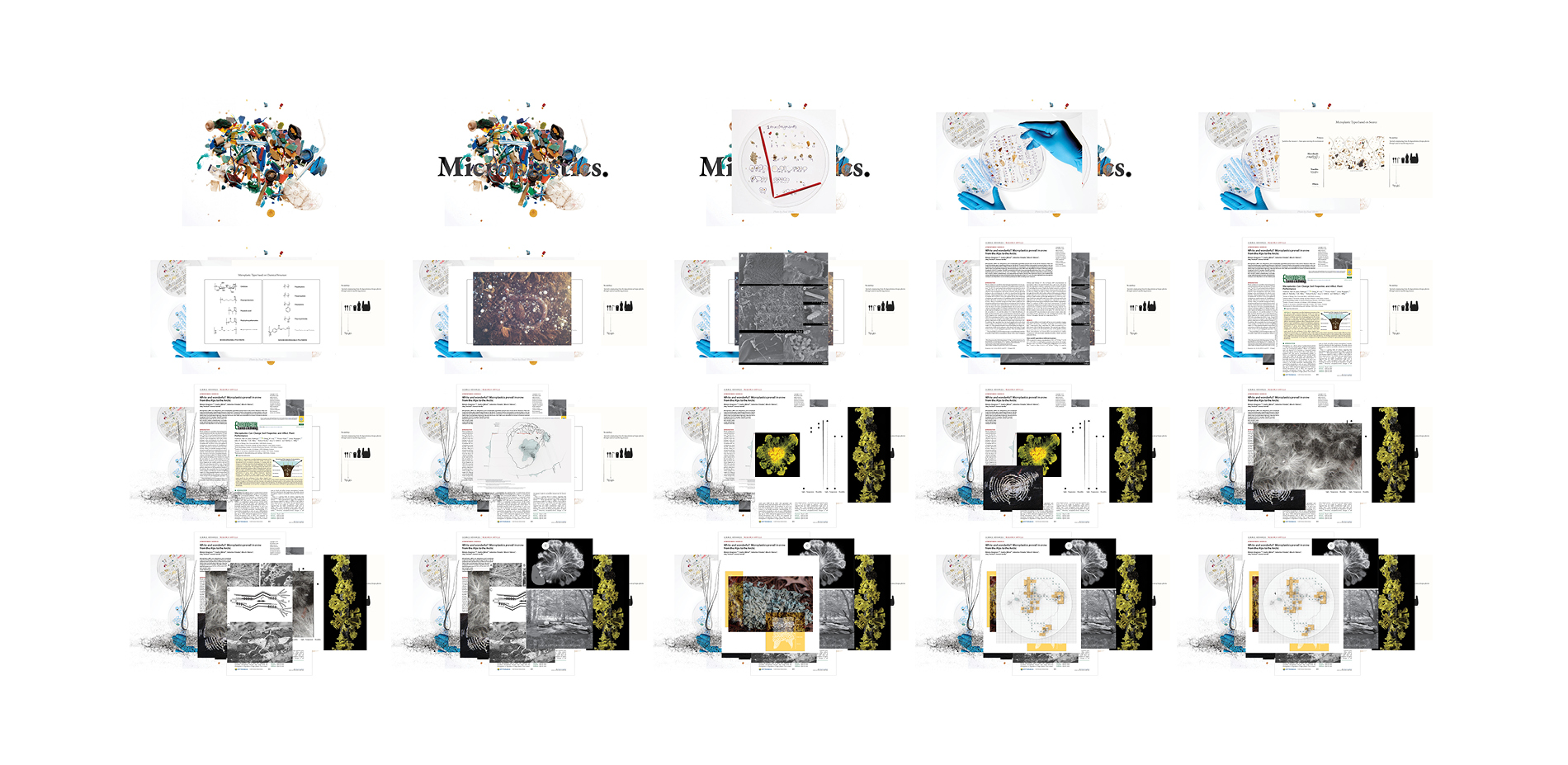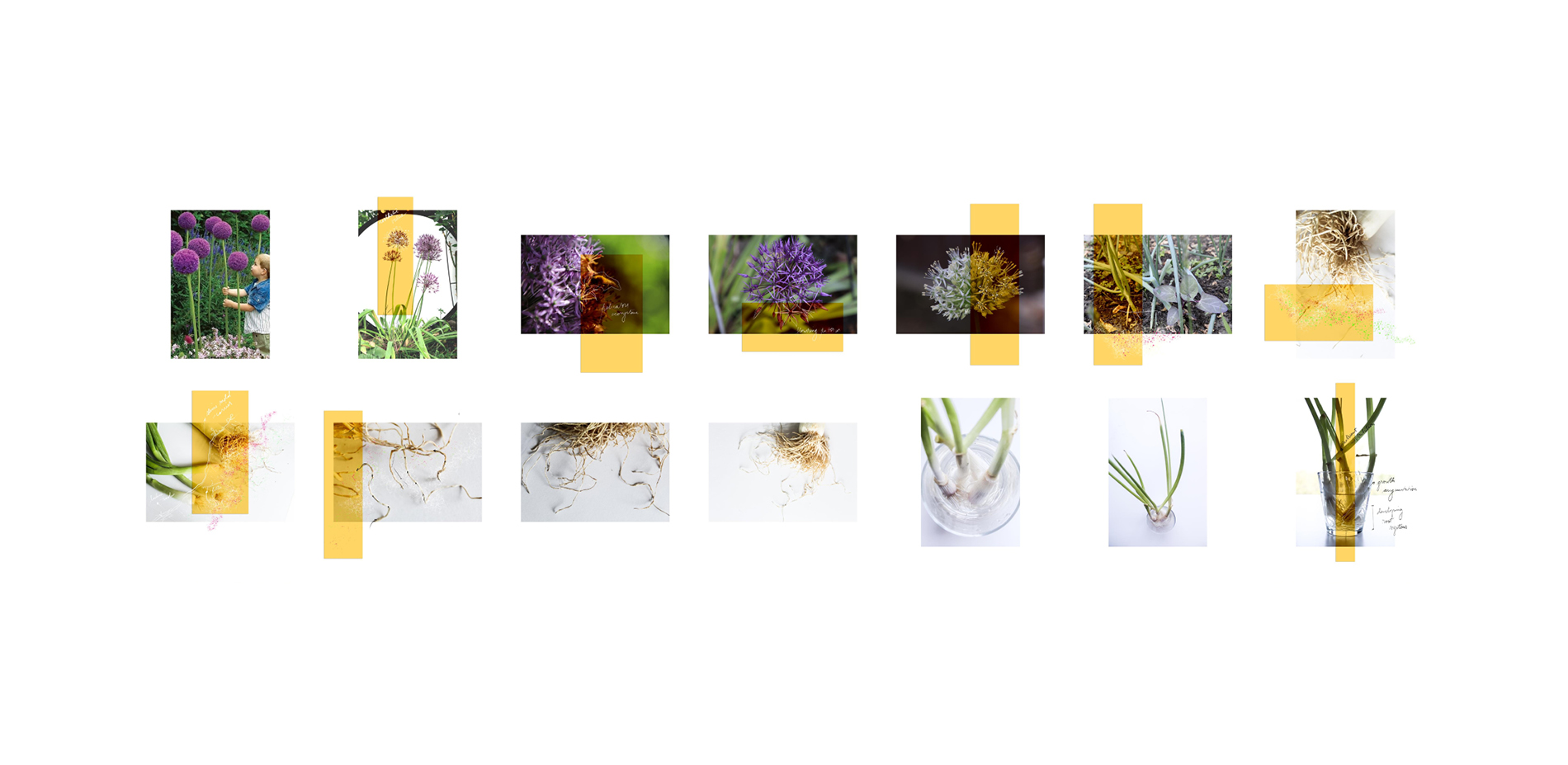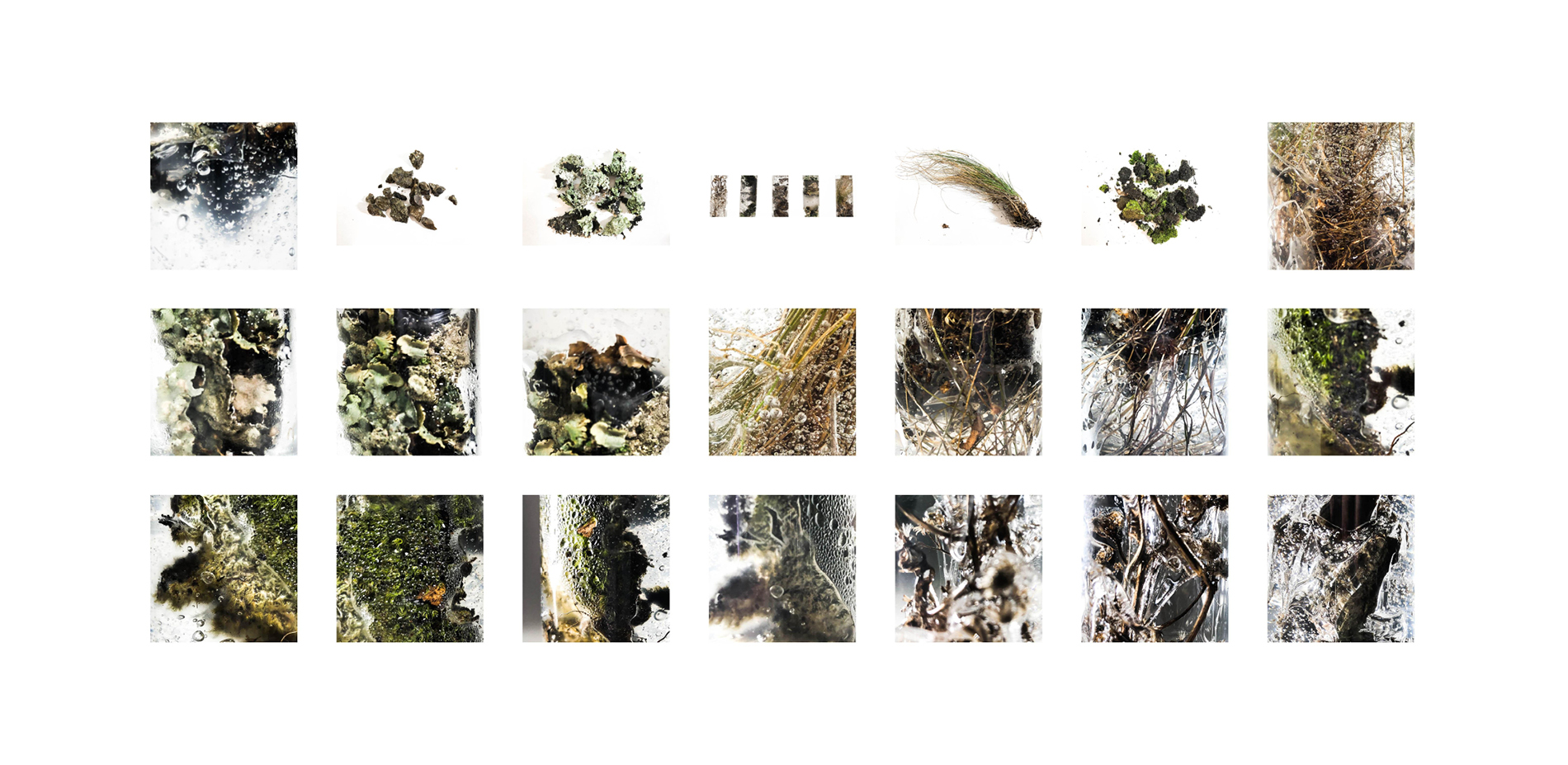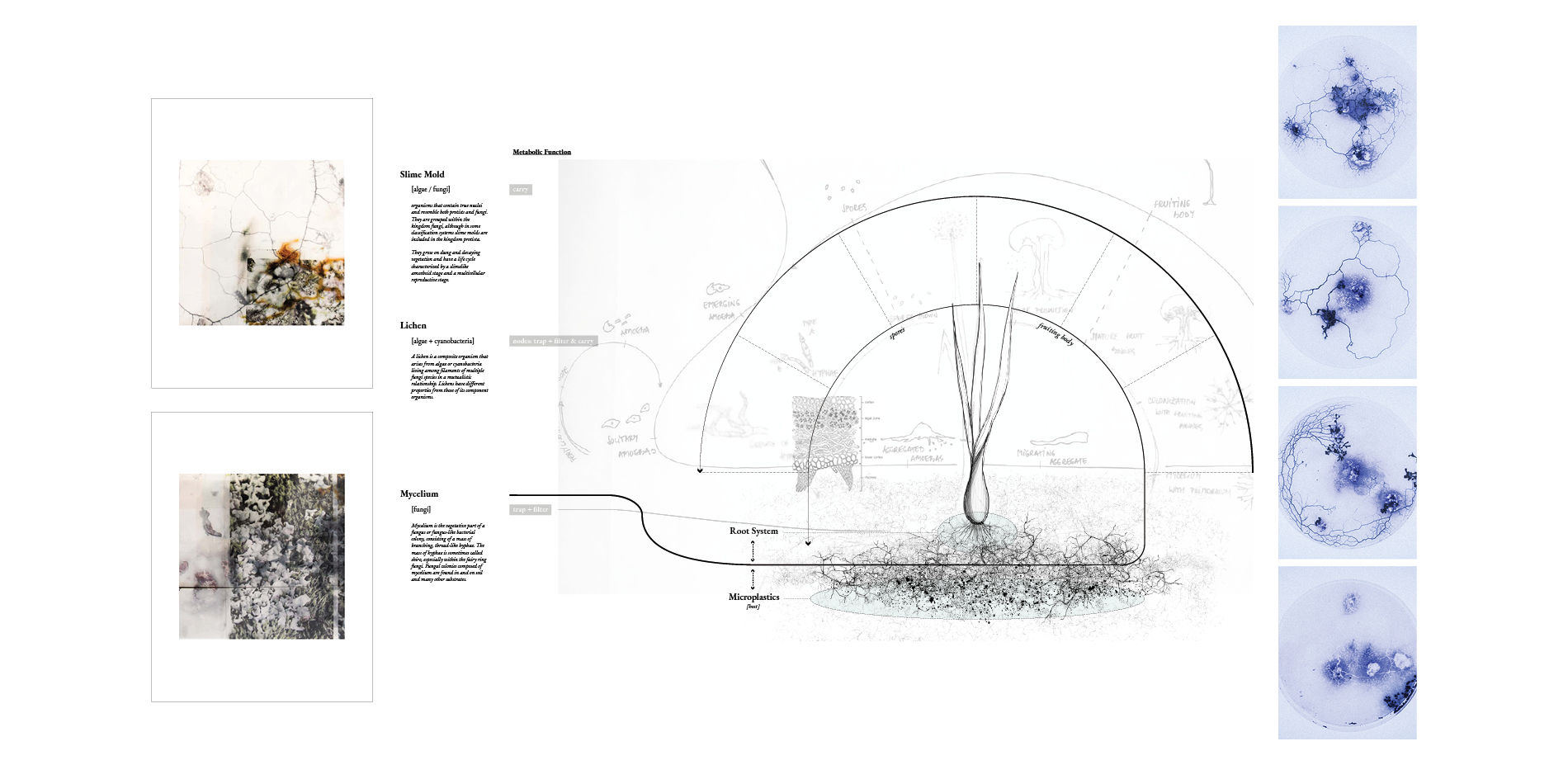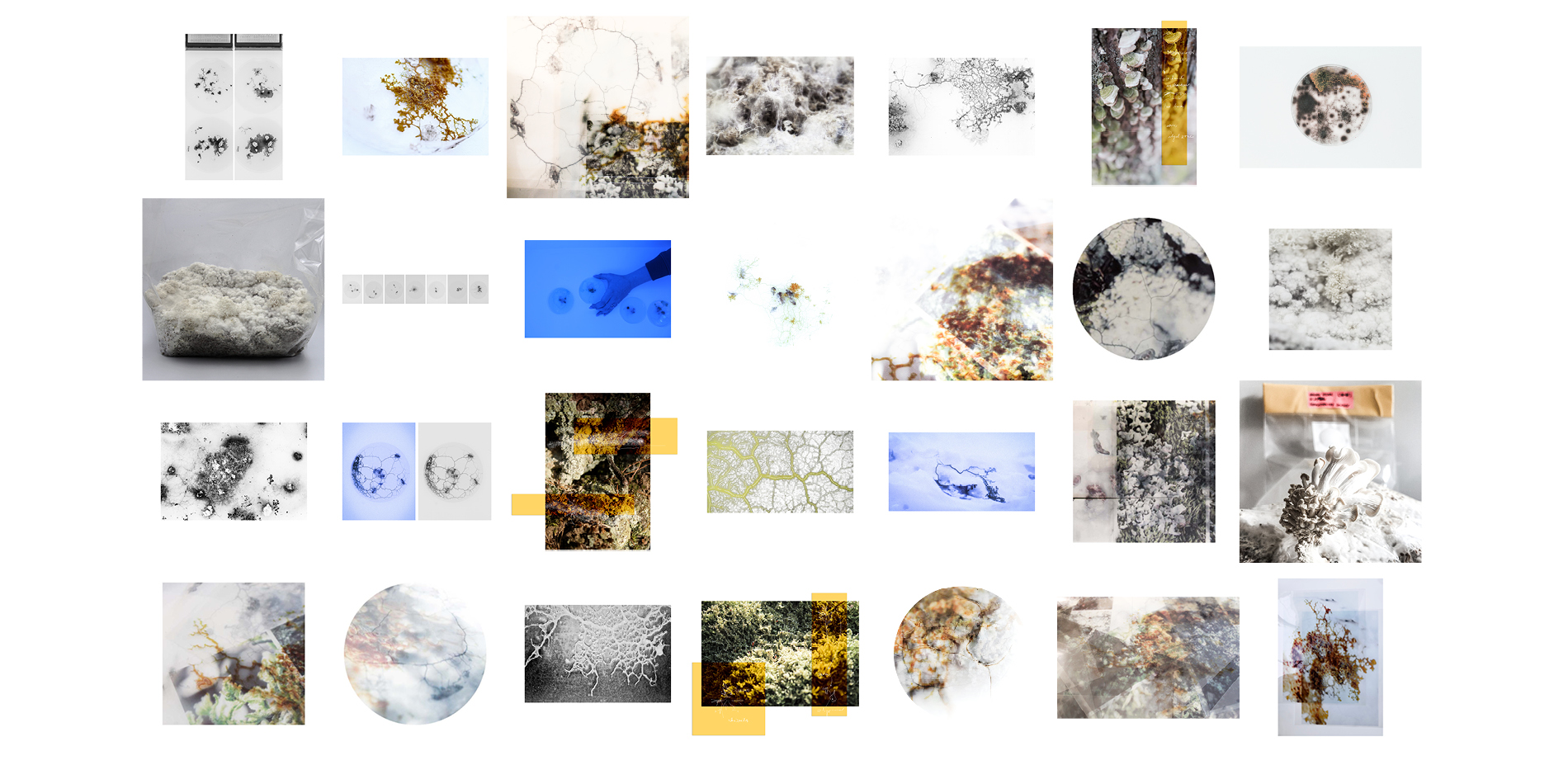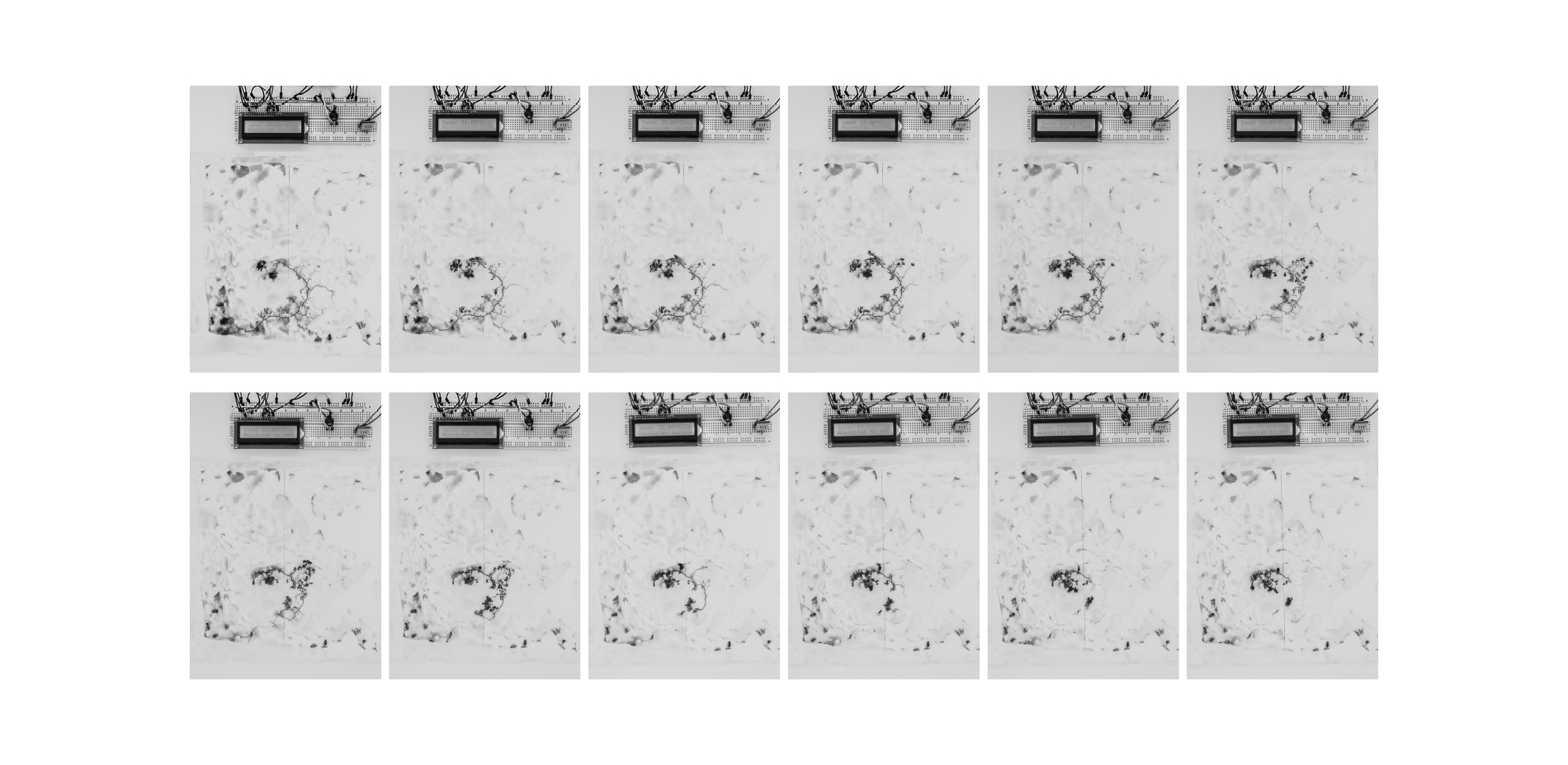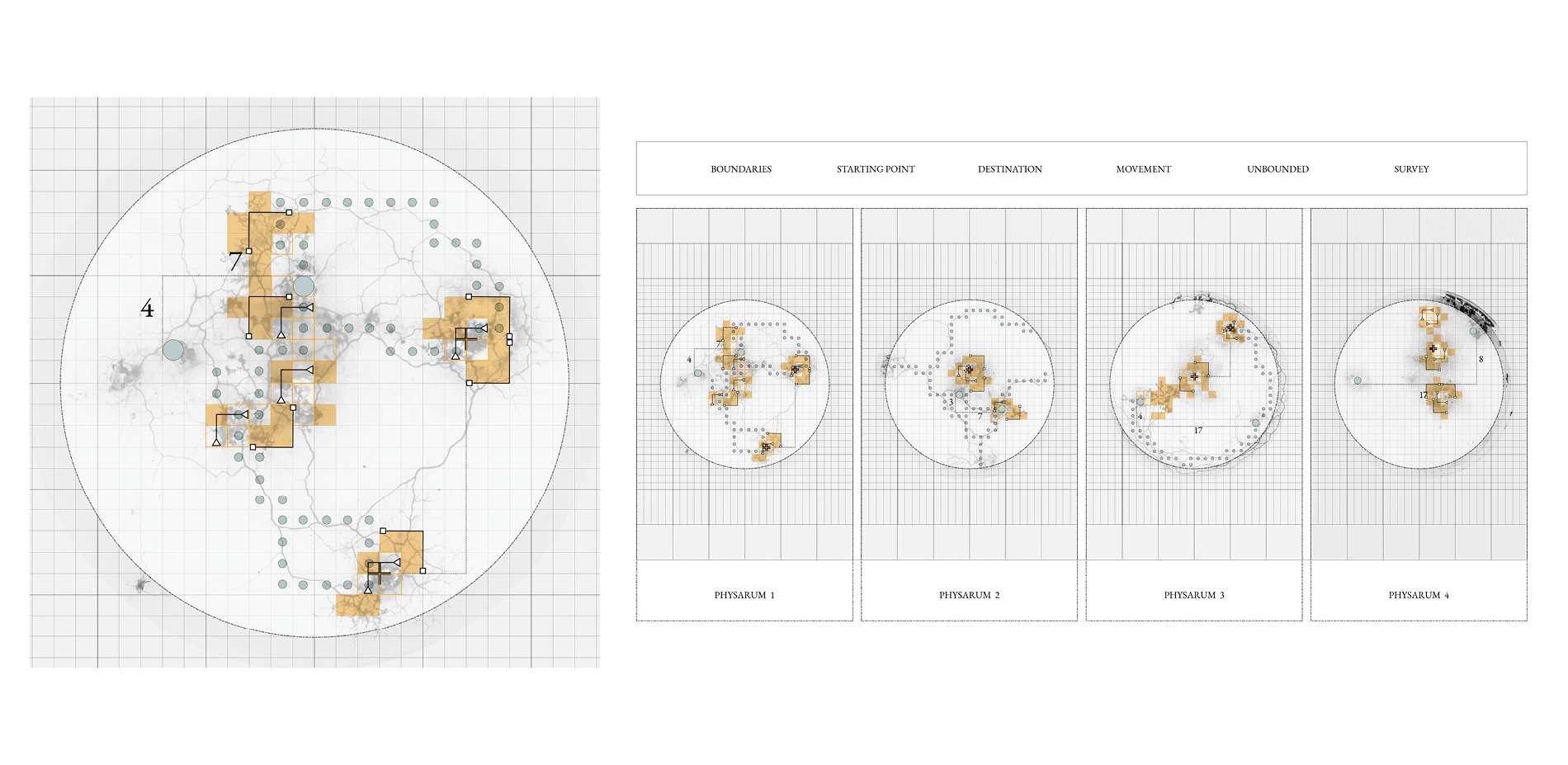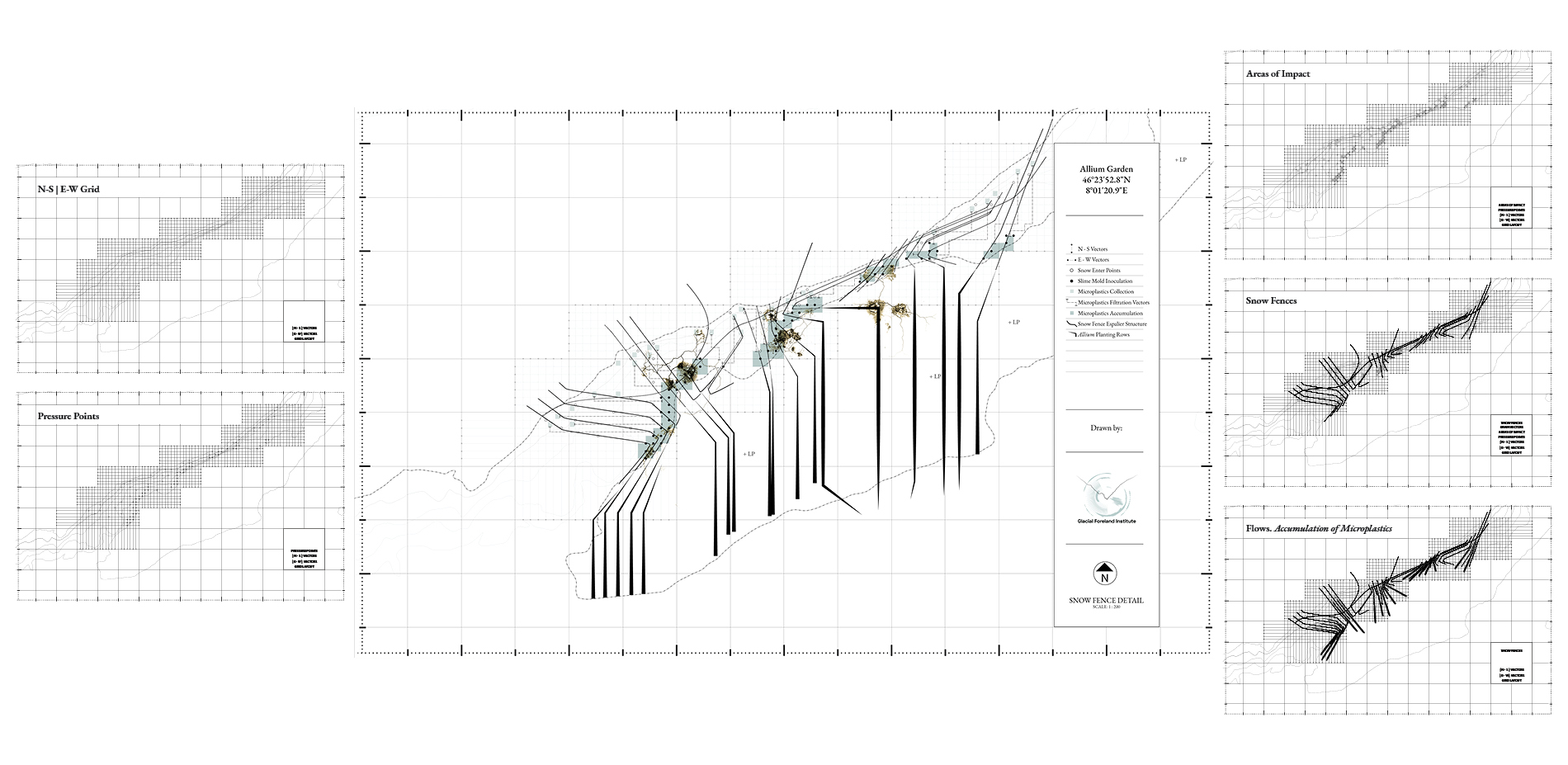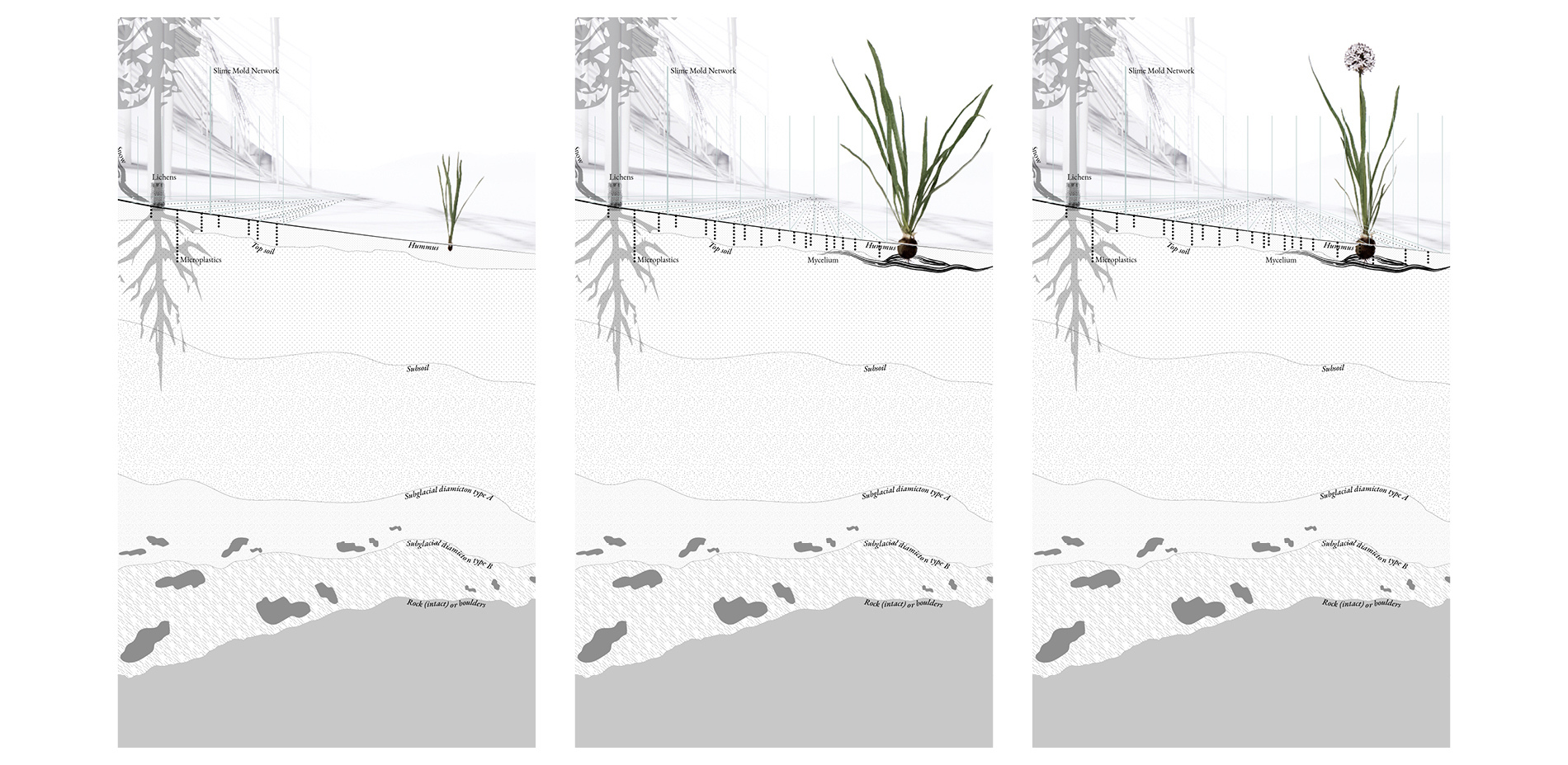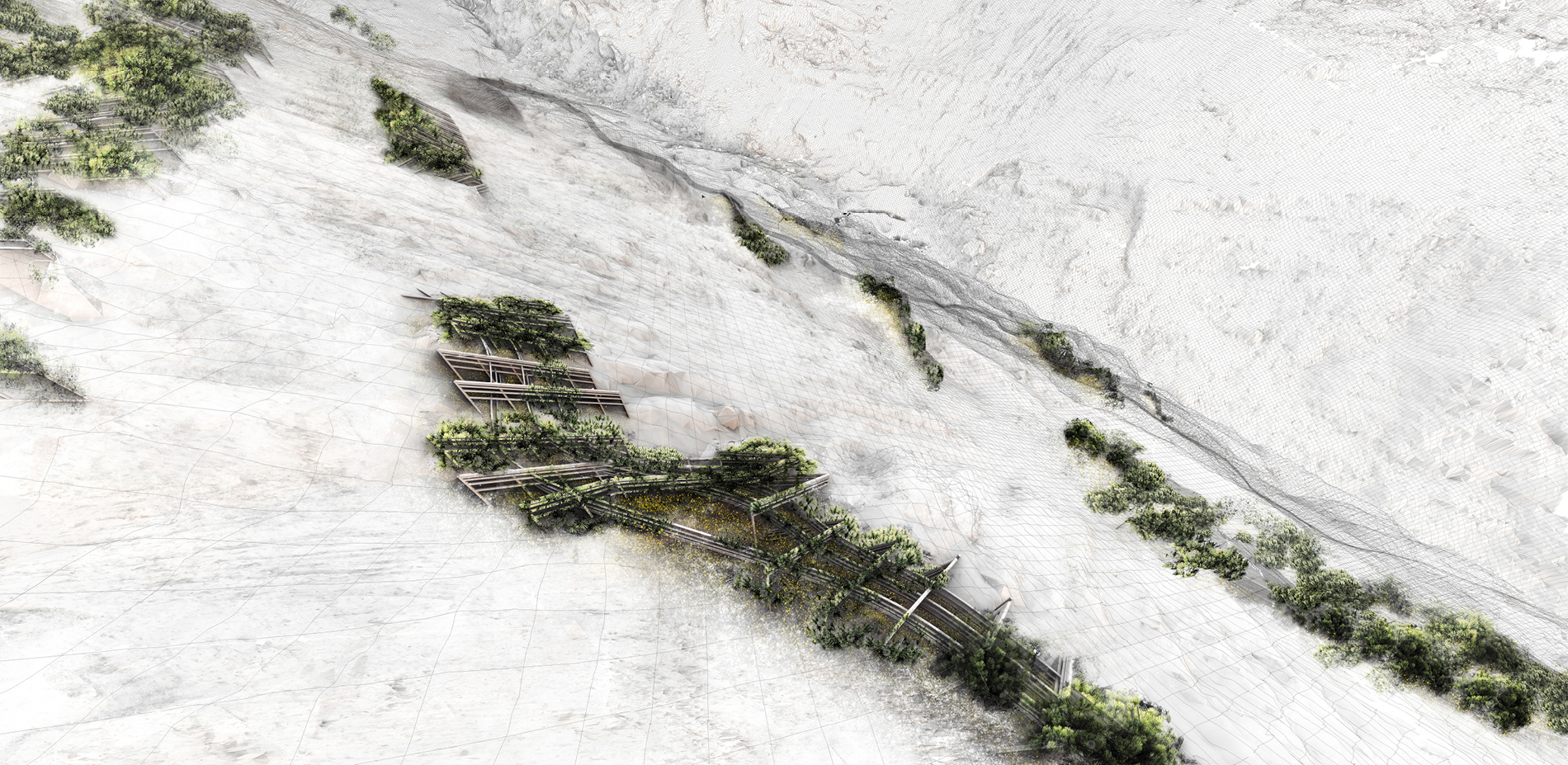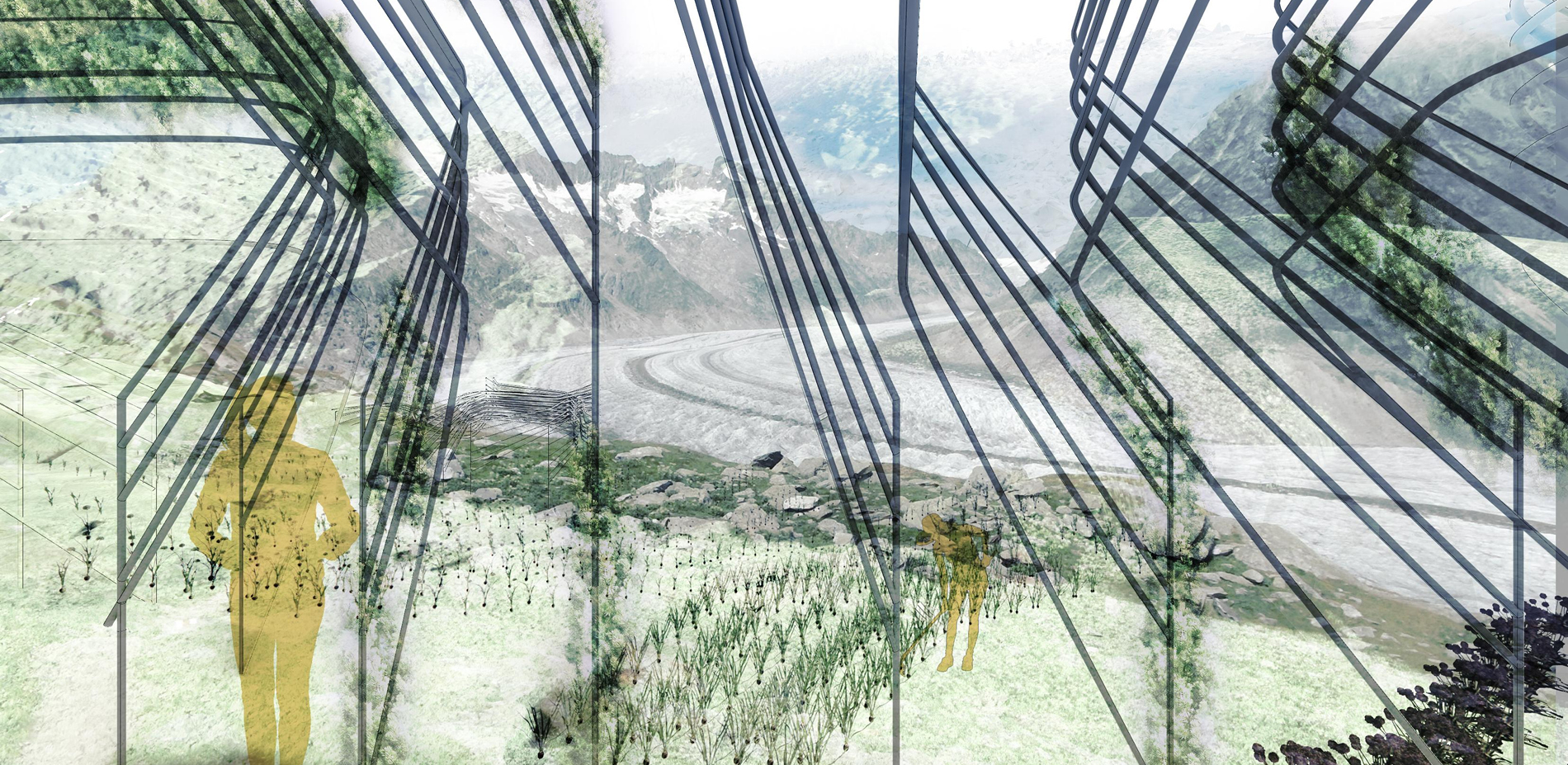After Plastics: The Gardens of the Glacial Foreland
Honor Award
Research
Aletsch Glacier, Switzerland
Andreea Vasile-Hoxha, Associate ASLA
Faculty Advisors: Rosalea Monacella
Harvard University
A speculative investigation into the future of microplastics, this project is strange, apocalyptic, and evocative. To understand this project, you have to take yourself on an adventure that asks what research means in our field. They have thoughtfully constructed a narrative that includes site analysis, micro-scalar ecologies, and even a fictional laboratory that ‘conducts’ this research. You’re seeing the story play out, and even if you don’t understand it, the subject and story make you want to spend time with it.
- 2021 Awards Jury
Project Statement
After Plastics is a transitional landscape – from glacial to post-glacial – where microplastics play a critical role in the development of a new plant growth pattern, strategically augmented through the intervention of the landscape architect. The production of the garden is in continuous evolution as the landscape is perpetually reformed through a new compositional stratum of the post-Anthropocene material: plastics. Its operation relies on a metabolic process that transforms and transfers novel material conditions between an interconnected web of mycelium, slime mold, ancient lichens awakened from their dormant state, and a wide range of Allium species. The project questions the potential emergence of microplastic particles in the most remote, pristine places on Earth over the next two centuries and the imminent implications on landscape systems and their formation through parallels between geological and biological time scales. Organized in a series of laboratories, After Plastics engages in a telescopic lens from the emerging micro scalar ecologies of biological structure and chemical compounds to the larger scale of networks and flows that generate new material ecologies.
Project Narrative
The plastic bag has lost its individuality. It is a new them, with hundreds of different identities dispersed around the world, in the most remote, pristine places on Earth. They are now much smaller and much more alone. Some have chosen to remain in the Pacific vortex, some were captured by ocean monsters and never came back, and some others have chosen to explore the world. They have gone through unbelievable experiences: navigated the winds over and again, the rain, and the aggressive adventure on the cold white flakes.
Plastic particle x is currently sunbathing between the sharp peaks of the Swiss Alps. It is reflecting on the journey that had brought it here, while discovering the essence of its new identity – it is now called a microplastic particle. What that truly means, Particle x has yet to understand, but for now, it begins to feel trapped under the snow, slowly freezing…
…
Years have passed and there Particle x emerges into the world again: well rested yet confused. It was not expecting to come back to surface so soon. Moreover, the landscape around it has completely changed from the white fluffy snow- and ice- covered peaks, x now finds itself surrounded by sharp grey rocks and shy spots of green – dormant lichens slowly re-activating. The confusion was mutual: the ancient lichens have never seen anyone like x, and it has never seen this ancient creature. And yet, the curiosity immediately sparked a new friendship.
---
1. Introduction
113 years from the invention of Bakelite (first fully synthetic plastic compound), the world is facing an extraordinary phenomenon with unknown conditions on its impact on human and non-human health: microplastics dispersal in the most remote places on Earth. These microscopic particles (<5mm) are saturating the water systems, the soil, and the air we breathe. As their concentration rates will continue to exponentially increase, the risk of them affecting some of the most diverse and healthy ecosystems around the globe becomes a major concern, augmented by the broader implications of climate change.
The largest glacier in the Swiss Alps – Aletsch Glacier – is directly affected by the atmospheric microplastics dispersal. Currently found under a rapid state of retreat, projected to reduce its size almost entirely by 2100, the glacier is encountering a new geological stratum of microplastics that have been depositing in the region. As the ice layer melts, these particles will soon meet the sub-strata of ancient dormant lichens and fungi, creating an unprecedented scheme for the development of a peculiar material ecology.
After Plastics: The Gardens of the Glacial Foreland is a transitional landscape – from glacial to post-glacial – where microplastics play a critical role in the development of a new plant growth pattern, strategically augmented through the intervention of the landscape architect in close collaboration with the gardener, geologist, biologist, mycologist, and ecologist. The production of the garden is in continuous evolution as the landscape is perpetually reformed through a new compositional stratum of the post-Anthropocene material: plastics. Its operation relies on a metabolic process that transforms and transfers novel material conditions between an interconnected web of mycelium, slime mold, ancient lichens awakened from their dormant state, and Allium species. Each biological material has a unique function in the metabolic system: slime mold is a carrier, the lichen is a node, and the mycelium becomes a trap + filter mechanism. As a whole, the three of them form a distribution network that mitigates the microplastic concentration levels needed for the growth of Allium. Scientific research has discovered that crops of spring onion thrived in soils saturated with polyester fibers and polyamide beads due to an unexpected host-parasite relationship between the microplastic particles and an arbuscular mycorrhizal fungi (AMF). The mycelium attached itself on these particles rich in nitrogen, while, simultaneously, attached itself to the roots of the onion, augmenting its growth by exchanging nutrients.
The project questions the potential emergence of microplastic particles in the most pristine places on Earth over the next two centuries and the imminent implications on landscape systems and their formation through parallels between geological and biological time scales. Organized in a series of laboratories within the proposed Glacial Foreland Institute, After Plastics engages in a telescopic lens from the emerging micro scalar ecologies of biological structure and chemical compounds to the larger scale of networks and flows that generate new material ecologies.
2. Methodology
The Glacial Foreland Institute was founded in 113 A.P. (2020 A.D.) as a response to groundbreaking research in atmospheric microplastic dispersal and soil pollution. Previously considered a harmful material of the Anthropocene, microplastics became the main investigation focus at GFI, particularly for its symbiotic relationship with ground materials and flows in a rapidly evolving ecosystem indirectly saturated with these particles. Today, microplastics are the keystone compound upon which the emergence of new ecological territories depends on.
Landscape Performance focuses on addressing the relationship between human activity and earth, by understanding and applying the deep geological time scale to a landscape shifting at accelerated speeds. As the glacier retreats, the glacial foreland expands, creating the perfect canvas for an emerging ecology. The glacial foreland is the perpetually changing area between the current leading edge of the glacier and the moraine of the latest maximum. In Aletsch Glacier, the latest maximum was registered in 1850, and due to the rapid glacial retreat, the area has been expanding significantly. Moving onto Material Taxonomy, the focus is establishing a clear understanding of the driving material – microplastics – seen through various lenses: origins, chemical compounds, scientific research on atmospheric dispersal. In addition, a taxonomy of Allium species is deployed, categorizing them based on their root system and above-ground conditions, as well as a catalog of lichens and soil conditions. Material Ecology is synthesizing the dynamic field knowledge of biology and ecology, by expanding the research on the symbiotic relationship between biological material – slime mold, lichen, and mycelium – and human manifestation within the garden – Allium. While operating at the micro scale, the implications of the proposals derived from this laboratory have much extensive effects on the larger territory. The final design laboratory, which works with principles and knowledge from gardening, ecology, and landscape architecture – Garden Prototyping - establishes a series of patterns extracted from the behavior observed in the materials tested in order to generate iterations on the designed landscape structures. These structures are perceived as an inoculation mechanism within the landscape, adaptable in both biological and geological time scales. The design is envisioned as a transitional glacial to post-glacial garden of Allium, constructed through an intertwined network of material ecologies performing both at the organism scale and the larger territory, framed by the reinterpreted snow fences. The snow fence network is an extension of the of the garden, operating at the geological scale. It reinterprets the structure of the traditional snow fence, giving it a new meaning not only through the addition of a new organic material - species of Larix, Picea abies, and Pinus mugo espaliered on a steel structure - but also by transforming it into a filter of snow saturated with microplastics.
3. Conclusion
In the context of Aletsch Glacier and similar geologies across the globe, the deployment of such unique material exchanges pushes the limits of the current landscape fabrication principles, tools, and processes, as the designed artificial structures supporting the growth of a new ecology rely on a procedure of inoculation which, ultimately, generates the anthropogenic ground. Thus, the incredible potential for further studies within the landscape architecture field and beyond, using After Plastics as the catalyst, lies in deeply understanding and advancing the bounds of biological matter as a mean for interchangeably design and fabricate landscapes from micro-scalar interventions to large territories.
Plant List:
- Allium
- Larix
- Picea abies
- Pinus mugo
- *Lichen
- *Arbuscular Mycorrhizal Fungi
- *Physarum polycephalum
